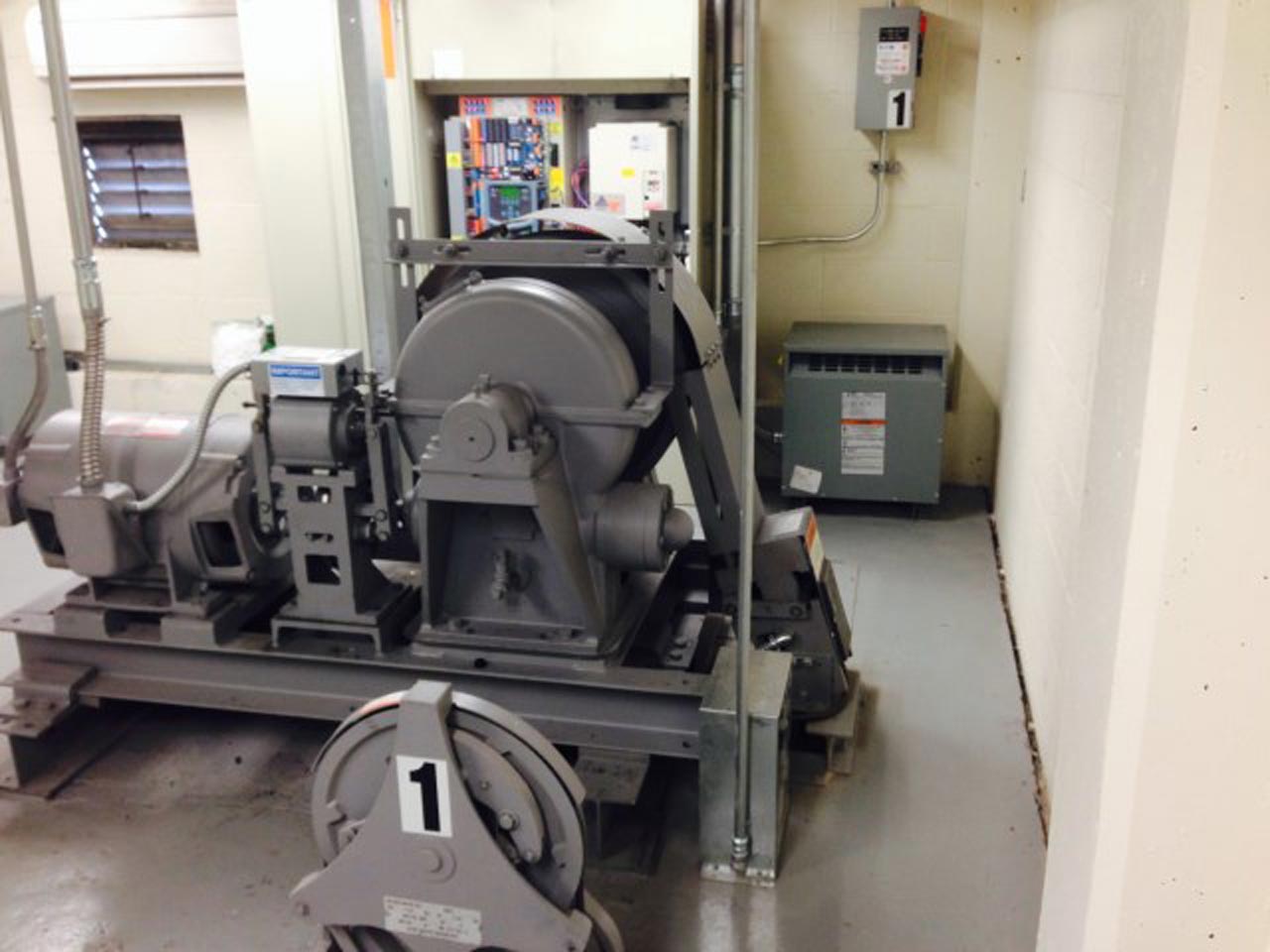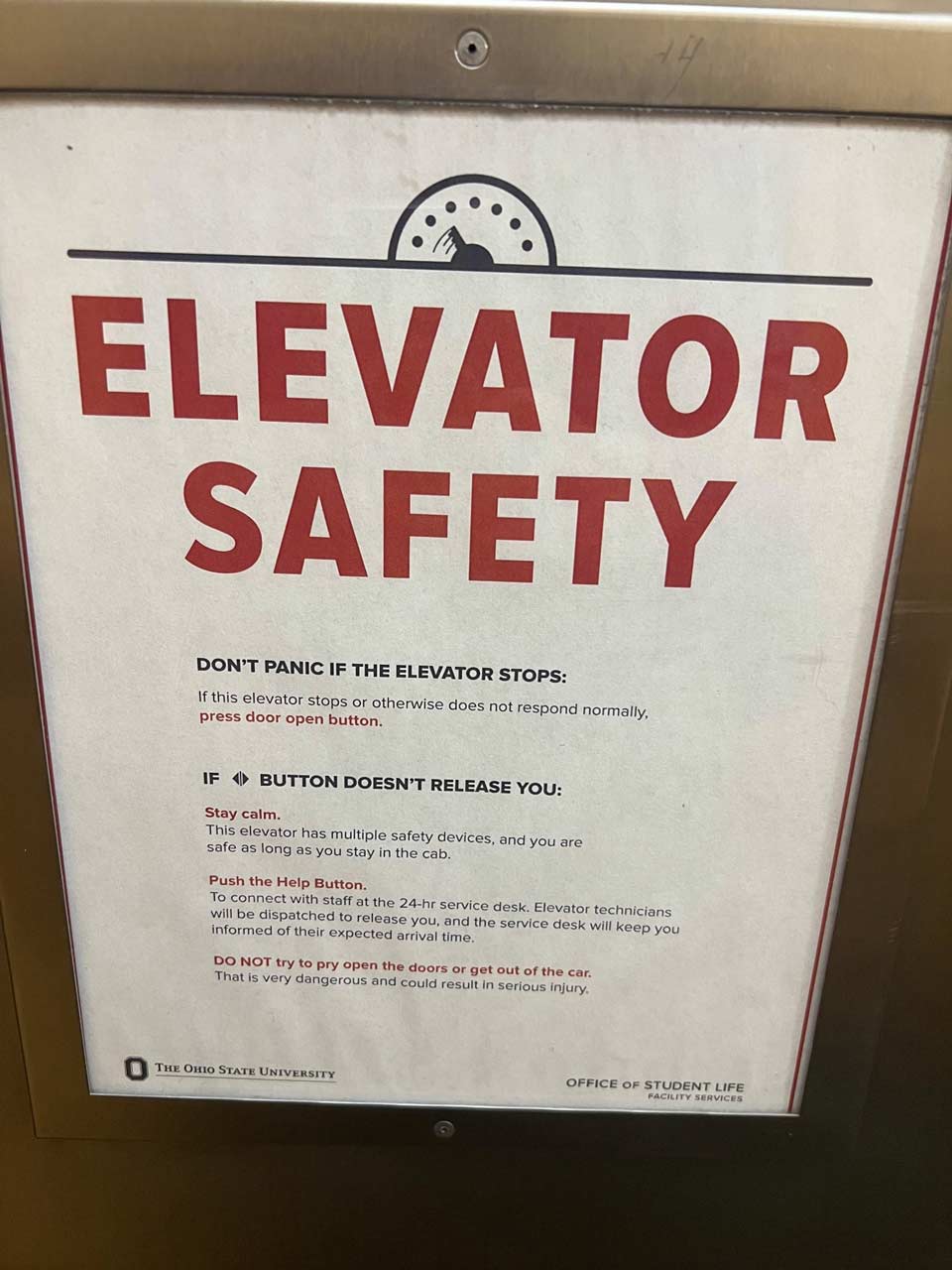“Doors, Doors, Doors”
Jul 6, 2023

Your author (KF) learns about OSU’s VT fleet (and what goes into maintaining it) from Daren Lehman (DL).
images courtesy of OSU
With a total enrollment of 67,772 students as of fall 2021, The Ohio State University (OSU) comprises hundreds of buildings across six campuses. Covering a footprint of 6.2 million ft2 across these campuses — including 36 undergraduate residence halls and five houses; eight health, wellness and student success facilities; dozens of food service locations; and 40 acres of outdoor recreation space — is the Office of Student Life.
The more than 30 Student Life departments work to help Buckeyes thrive and engage by connecting them with housing, health and dining services and providing opportunities for recreational sports, student philanthropy and community engagement. Additionally, maintenance and facility services fall underneath this office. Employing more than 6,000 individuals, Student Life is committed to making a positive impact on students’ daily lives through its programs and services.
And whether college students think about it or not, vertical transportation (VT) plays an important role in their everyday on-campus experience. Your author spoke to Student Life’s Daren Lehman to hear his perspective on what it takes to keep elevators running smoothly at OSU.

KF: Please tell me about yourself and what you do for OSU.
DL: My name is Daren Lehman, and I serve as the contract management specialist for the Office of Student Life at OSU. I have been with the Office of Student Life since 2001 and am also a proud graduate of OSU.
KF: Would you please provide a general overview of OSU’s VT systems?
DL: The Office of Student Life manages 108 elevators. We have a combination of types, with the majority being traction cars. The majority serve students in the residential halls, and we have several units in the Ohio Union (our student union), dining facilities and recreational sports facilities. Our oldest elevator in the fleet is a three-stop winding drum Otis Relay Logic installed in 1958. The next oldest is a hydraulic two-stop food service car installed in 1966. The remainder of our units are microprocessor-controlled with an average age of modernization of 15 years. In 2017 and 2018, we built eight new residential facilities, plus two dining facilities and one recreational facility. This accounted for 25 new units, all with nonproprietary Motion Control Engineering (MCE) controls. Our latest round of modernizations came in 2018-2019. We modernized seven traction units utilizing nonproprietary controls from GAL Manufacturing. We have also replaced door equipment on many units utilizing MOVFR controls.


My mentor always said the issue with elevators is doors, doors, doors. I use that mantra when investing in our fleet. Our current project, that began in May of this year, will modernize three traction cars each serving 14 floors. We are replacing the current controller, Miprom (Montgomery KONE), with GAL. The modernization includes new gearless machines, door hardware, door operators and guide rollers. We will also be installing the PitSafe® system for the first time in any of our units.
KF: Out of curiosity, any plans for Student Life’s oldest unit, the winding drum elevator?
DL: It is slated to be converted to a hydraulic unit during renovation of Baker Hall within the next two years.
KF: Could you tell me about efforts taken to standardize equipment when new elevators are built, or existing units are modernized?
DL: Student Life adopted a standard of all nonproprietary controllers in early 2000. We have maintained that standard since, and it has served us well when bidding for maintenance.
KF:Is there a preferred manufacturer or supplier?
DL: Ohio State Student Life elevator modernization specifications state nonproprietary equipment such as MCE and GAL. Contractors can submit their bids with these two manufacturers, as well as others that meet the nonproprietary guidelines. We specify no tool needed, and that the controller manufacturer offers training and support to all service providers.
KF: We’d be interested in learning more about the contractors that perform maintenance, repairs and modernization of the VT systems.
DL: Student Life has a contract with Fujitec. They have been our service provider for the past five years, and we are very happy with their service and partnership. We also partner with eMCP (electronic maintenance control program for VT equipment) as a third-party consultant. eMCP has enabled us to develop bid specifications that ensure we will receive the maintenance needed for safety, code compliance and longevity of equipment. Utilizing eMCP allows us to compare costs for multiple service providers knowing each will be required to perform the eMCP tasks at the proper frequency, at minimum. eMCP was able to produce a maintenance plan that complies with the State of Ohio maintenance control program and is not generic, but rather, based on type, vintage, environment and usage. Within our portfolio we have units that do not experience the same usage as our other units, such as those in a three- or four-story building versus our taller buildings. Given the usage is different, it would reason that the maintenance program would be different, as well.

KF: What makes managing VT equipment for a university unique? Are there any challenges or benefits specific to a college campus?
DL: I believe residence halls are unique because there is constant operation of the elevators — almost 24/7. We experience lots of inter-floor movement of one or two floors. This gives our elevators’ doors an extensive workout, and we must increase the preventive maintenance for our door hardware and operators. Students often hold the doors, which also increases the operation of the doors, and we experience nudging and door operator time outs on a frequent basis. Students are also very curious and experiment with elevators — sometimes they uncover issues that we must fix. We have had students find a way to access a locked-out floor. Thanks to cameras, we were able to discover their findings and work with our service provider to eliminate the loophole they discovered.
KF: Were any special considerations taken for VT when students returned following the COVID-19 pandemic campus closure?
DL: We placed stickers on the floor of the elevators that instructed riders to stay 6 ft apart. Although that was not possible in most of our elevators with more than one person inside, it did send a message to keep a safe distance. We also posted signs outside of cars next to hall-call stations stating to keep a safe distance. We worked with our service provider to take precautions when having to service any elevator, especially those within our facilities that may have been used to house students who had tested positive for COVID-19.

KF: Could you tell me about the VT educational programming the department provides?
DL: We post signage in our elevator lobbies and inside our elevators. We include elevator information in the residence hall handbooks. We also present to the Resident Assistants (RAs) annually. This presentation discusses elevator safety, including capacity. We remind them not to overload the elevators, and the RAs should model this behavior. If a student or group of students has exhibited poor behavior in an elevator, by either vandalism or by causing the elevator to stall, they are referred to Student Conduct and many times meet with me directly to talk about why the elevator did what it did. I also take the time to talk about unintended consequences. We do have students who must use the elevator versus the steps, and the behavior caused an elevator to be out-of-order, so it was not available for the student who needed it. When an elevator is out-of-order, there could be costs incurred, as well as inconvenience for the elevator technician who has to make a trip to campus. There are also times during an entrapment where a student would experience high anxiety or even a panic attack, and the fire department and emergency squad is called. Any time these situations can be avoided, they should be. The students jumping in the elevator did not think of these unintended consequences.
Get more of Elevator World. Sign up for our free e-newsletter.









